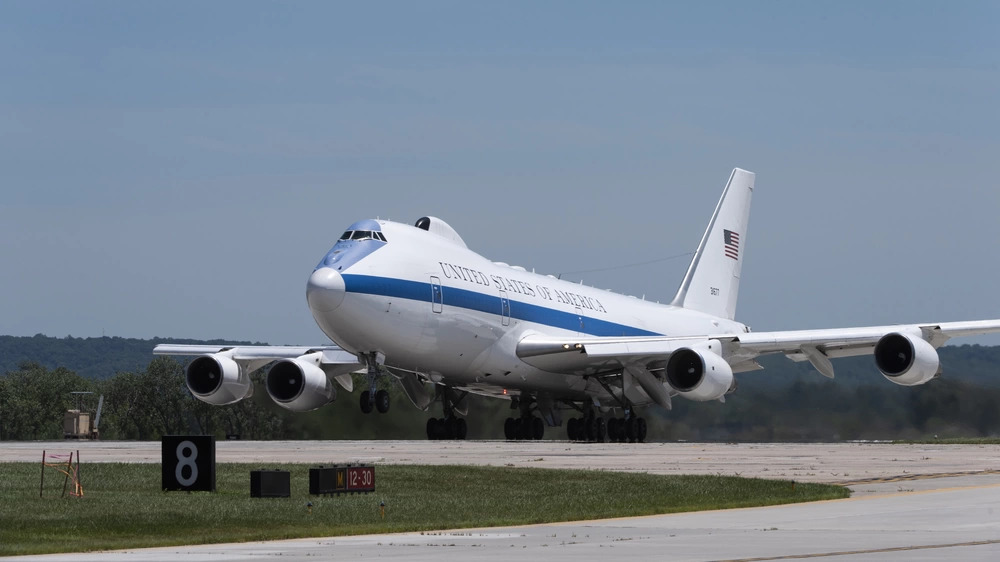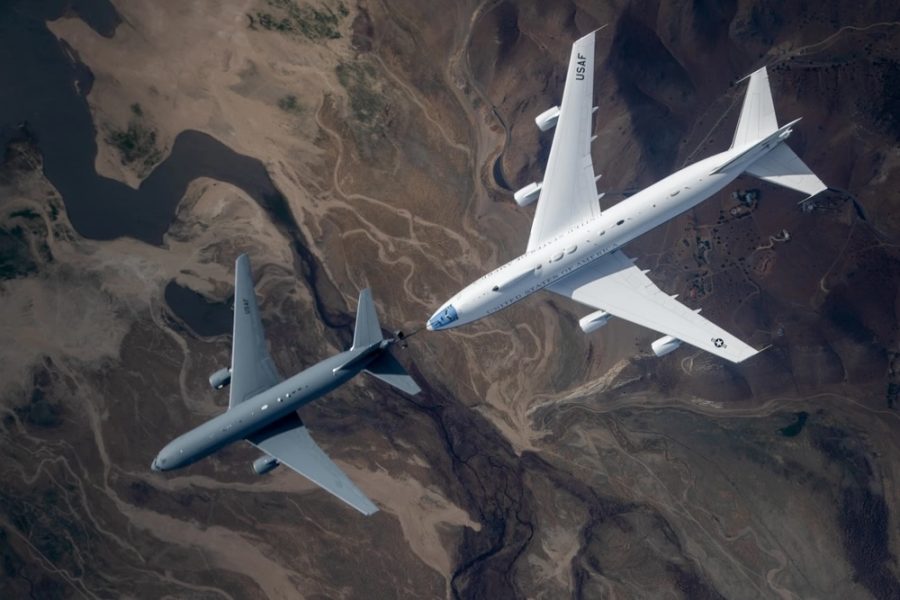The Air Force aims to improve its strategic command and control capabilities by standing up a new wing at Offutt Air Force Base, Neb. The 95th Wing will put disparate command and control units from the Active-duty Air Force, Air National Guard, and Air Force Reserve under one wing to provide a more unified command and better advocate for resources for strategic command and control, the branch explained in a Sept. 4 press release.
“This decision represents the culmination of years of work by the Air Force and the congressional defense committees to ensure the United States is fully prepared to deter and defeat any adversary who threatens our national security,” Rep. Don Bacon (R-Neb.), a retired Air Force brigadier general who once commanded the 55th Wing at Offutt, said in a statement.
The units involved in the new wing are the 595th Command and Control Group (CACG) based at Offutt; the 253rd CACG, a Wyoming Air National Guard unit based in Cheyenne, Wyo.; and the Air Force Reserve’s 610th Command and Control Squadron based at Davis-Monthan Air Force Base, Ariz.
No personnel from the 253rd or the 610th will move for the new wing, but about 70 new military job slots will open at Offutt over the next few years, with the first to arrive in spring 2025, the Air Force said in the press release. The wing is expected to be fully operational by 2027.

The 595th CACG’s job is to make sure senior U.S. officials can maintain nuclear command, control, and communications (NC3) and command conventional forces during a crisis. It flies and maintains the Air Force’s fleet of four E-4B National Airborne Operations Center (NAOC). Also known as the ‘Doomsday plane’, the E-4B is a Boeing 747 hardened against the effects of nuclear detonations, including electromagnetic pulse, and equipped with worldwide communications gear.
According to the Air Force, the 95th Wing “will provide a unified command path to assure readiness” of the 595th’s NAOC and NC3 missions. The 595th is currently a standalone group under the 8th Air Force, the Active-duty bomber-flying numbered Air Force under Air Force Global Strike Command. Most other 8th Air Force component units are wings, larger organizations that generally receive more resources.
The new wing should also benefit the 253rd CACG and 610th CACS because it will “provide an enterprise view of broad Command and Control, or C2, capabilities and improve the ability to lead, advocate and provide for resources, training and readiness,” the Air Force explained.
The 610th CACS conducts command and control training for multiple combatant commands, an Air Force official told Air & Space Forces Magazine, while the 253rd CACG supports various missions in U.S. Northern Command.
Putting the Reserve and Guard units in the 95th Wing is meant to improve command and control “and normalize funding paths to organize, train and equip units,” the Air Force explained. The service said the new wing is part of a larger reorganization as the Air Force prepares for potential future conflicts against near-peer rivals such as China and Russia.
“Modern war technologies make defense readiness and command efficiencies more critical than ever before,” said Rep. Adrian Smith (R-Neb.) in a statement. “The activation of the 95th Wing will serve to strengthen American military effectiveness and is aligned with the standout record of service in our state.”
The announcement comes about five months after the Air Force awarded a $13 billion contract to replace the NAOC with the Survivable Airborne Operations Center (SAOC). The current E-4Bs have been flying since the 1970s and are struggling “capability gaps, diminishing manufacturing sources, increased maintenance costs, and parts obsolescence,” according to budget documents.
In May, the contractor, Sierra Nevada Corporation, announced it had secured five Korean Air 747-8 passenger jets to host the system. The aircraft were built around 2015 and will be about 15 years old when the first ones enter service.
